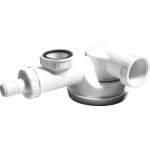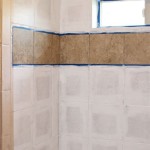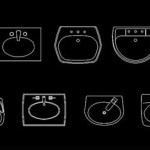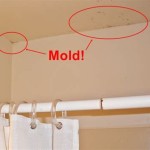How to Design a Bathroom Remodel on a Budget
Remodeling a bathroom represents a significant investment for homeowners. While luxurious transformations are appealing, it is entirely possible to achieve a stylish and functional bathroom remodel without exceeding a predetermined budget. Careful planning, strategic material selection, and a willingness to undertake some of the labor oneself are key components to a successful, cost-effective bathroom renovation.
The initial step involves establishing a realistic budget. This figure should encompass all aspects of the project, from demolition and disposal to the purchase of fixtures, materials, and potential contractor fees. Overlooking any element during this initial phase can lead to unexpected expenses and budget overruns. As a best practice, adding a contingency fund of approximately 10-15% of the overall budget is advisable to cover unforeseen issues that may arise during the remodeling process.
Once the budget is set, prioritizing needs versus wants is crucial. Distinguishing between essential upgrades and purely aesthetic desires allows for more informed decisions on where to allocate resources. For instance, replacing a leaky toilet or addressing water damage takes precedence over installing a high-end vanity with features that have a limited impact for the cost.
Planning and Design Efficiency
The planning and design phase significantly impacts the overall cost of the remodel. Maintaining the existing layout of the bathroom minimizes plumbing and electrical work, two of the most expensive aspects of a renovation. Relocating the toilet, sink, or shower requires rerouting pipes and potentially altering electrical wiring, thereby increasing both labor and material costs. If the existing layout is functional, consider focusing on cosmetic upgrades rather than structural changes.
Optimizing space utilization is another important consideration. Small bathrooms benefit from space-saving fixtures, such as wall-mounted sinks, corner showers, and compact toilets. Utilizing vertical space with shelving and storage cabinets can also maximize storage without encroaching on valuable floor area. Clear, detailed plans are essential. Accurate measurements and a well-defined design prevent costly mistakes and material waste during the construction phase.
Creating a mood board, either physically or digitally, can aid in visualizing the desired aesthetic and coordinating colors, materials, and textures. This visual aid helps to solidify design choices and minimize the likelihood of impulsive purchases or design changes that can strain the budget. Gathering samples of tiles, paint colors, and hardware allows for coordinated choices, ensuring a cohesive and visually appealing design.
Material Selection and Cost-Saving Strategies
Careful material selection is fundamental to achieving a budget-friendly bathroom remodel. Opting for affordable alternatives to high-end materials can significantly reduce costs without sacrificing style or durability. For example, ceramic or porcelain tiles offer a cost-effective alternative to natural stone, while still providing a wide range of aesthetic options and excellent water resistance.
Exploring different sources for materials can also lead to substantial savings. Comparing prices from multiple suppliers, including big-box stores, online retailers, and local salvage yards, allows for identifying the most competitive offers. Salvage yards often offer unique and characterful fixtures and materials at discounted prices, provided that they are thoroughly inspected for damage or defects before purchase.
Consider purchasing materials during sales or clearance events. Many retailers offer seasonal discounts on bathroom fixtures and materials, particularly during the off-season for home renovations. Taking advantage of these opportunities can result in significant savings on major purchases.
When choosing a countertop material, laminate or solid surface options present a more budget-friendly alternative to granite or quartz. While they may not possess the same level of prestige, these materials offer durability, ease of maintenance, and a wide array of color and pattern choices. For flooring, vinyl planks or tiles provide a water-resistant and affordable option that mimics the look of wood or stone.
Lighting can be a significant factor in the overall aesthetic of a bathroom. Instead of expensive, elaborate fixtures, consider using recessed lighting or simple vanity lights with energy-efficient LED bulbs. These options provide ample illumination while minimizing energy consumption and costs.
DIY and Labor Considerations
The level of DIY involvement in the remodel significantly impacts the overall budget. Undertaking tasks such as demolition, painting, tiling, and installing fixtures can substantially reduce labor costs. However, it is crucial to assess one's skills and comfort level before attempting any DIY work. Incorrectly performed plumbing or electrical work can lead to costly repairs and potentially hazardous situations.
If hiring a contractor is necessary, obtaining multiple quotes from different professionals is essential. Comparing quotes allows for negotiating the best price and ensuring that the contractor is qualified and reputable. Checking online reviews and asking for references from previous clients can provide valuable insights into the contractor’s work ethic and quality of service.
Consider hiring a contractor for only the most complex tasks, such as plumbing and electrical work, and undertaking the simpler tasks oneself. This hybrid approach can provide a balance between cost savings and ensuring that critical aspects of the remodel are handled by qualified professionals.
Demolition can be a significant expense, particularly if the existing bathroom contains hazardous materials such as asbestos. If the demolition work does not require specialized skills or equipment, consider undertaking this task oneself to save on labor costs. However, it is essential to follow proper safety precautions and dispose of waste materials responsibly.
When installing new fixtures, such as toilets and sinks, carefully following the manufacturer’s instructions is crucial. Incorrect installation can lead to leaks, damage, and the need for costly repairs. If unsure about any aspect of the installation process, seeking professional assistance is advisable.
Painting is a relatively simple and cost-effective way to transform the look of a bathroom. Choosing a high-quality paint that is specifically designed for bathrooms, such as a moisture-resistant or mildew-resistant paint, is essential to prevent damage from humidity and moisture.
Replacing outdated hardware, such as faucets, showerheads, and cabinet pulls, can also significantly enhance the aesthetic of a bathroom without breaking the bank. These small details can make a big difference in the overall look and feel of the space.
Finally, a budget-friendly bathroom remodel requires careful planning, strategic material selection, and a willingness to undertake some aspects of the project oneself. By prioritizing needs over wants, exploring affordable alternatives, and carefully managing labor costs, it is possible to create a functional and stylish bathroom without exceeding a predetermined budget.

Bathroom Remodeling On A Budget Bella Tucker

6 Ideas To Remodel Your Bathroom On A Budget Dumpsters Com

Diy Bathroom Makeover On A 500 Budget Small Remodel

Bathroom Remodeling On A Budget Bella Tucker

Bathroom Remodel On A Budget Simple Made Pretty 2025

Budget Friendly Bathroom Remodel Liz Pacini

Our Diy Bathroom Remodel On A Budget 13 Inexpensive Ideas

A Guide To Budgeting For Your Bathroom Remodeling Hdr

10 Bathroom Remodel Ideas On A Budget

The Ultimate Bathroom Remodel Guide Planning Budget And Design







